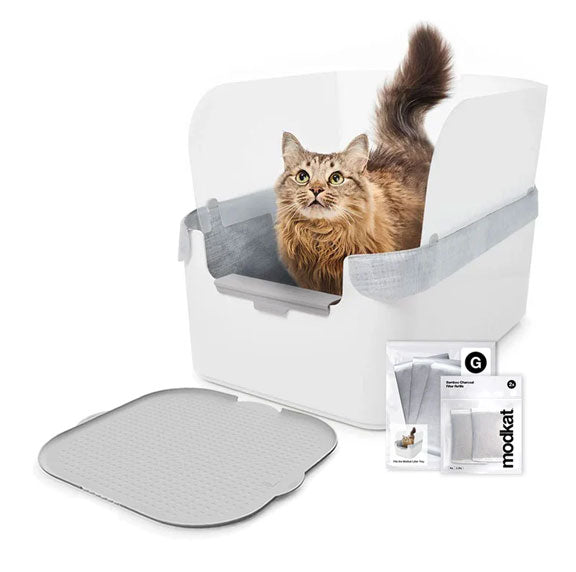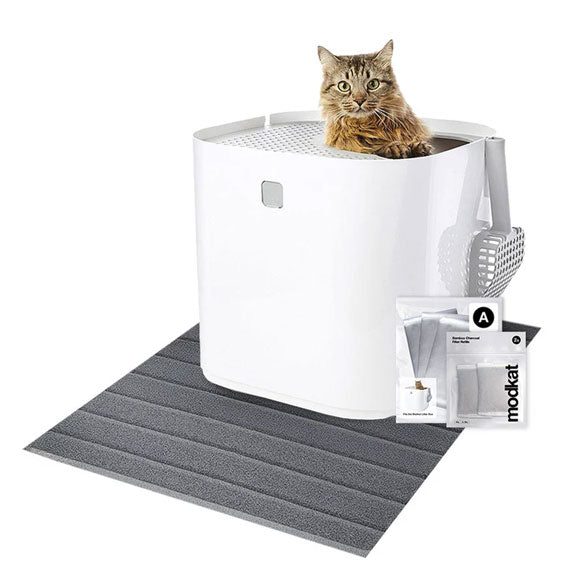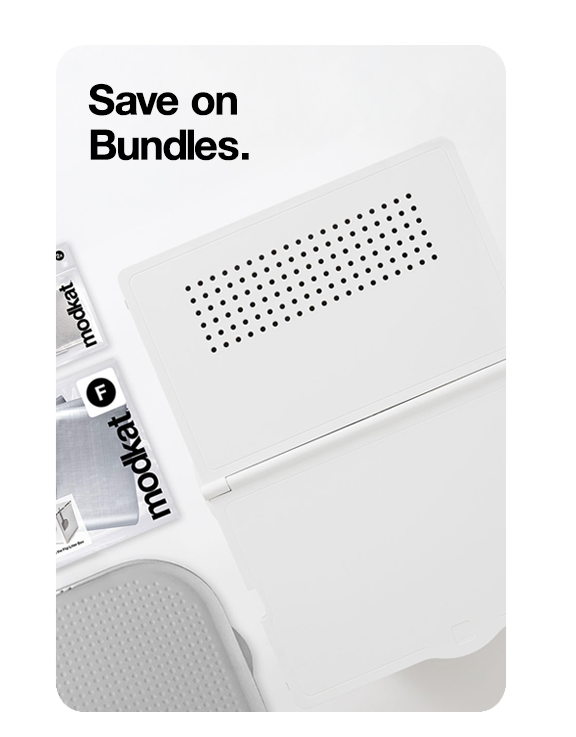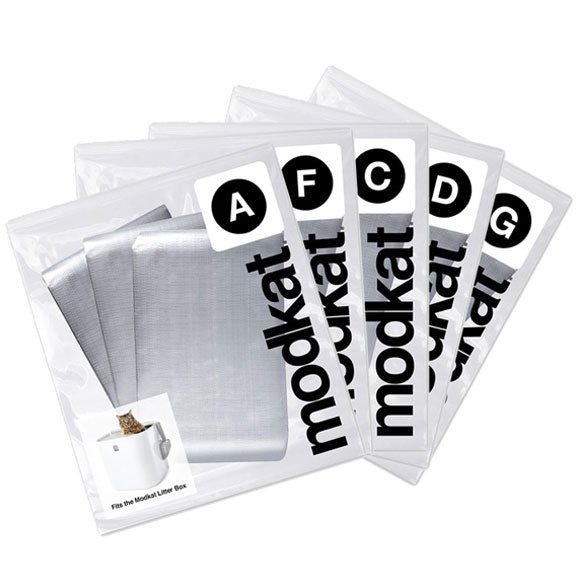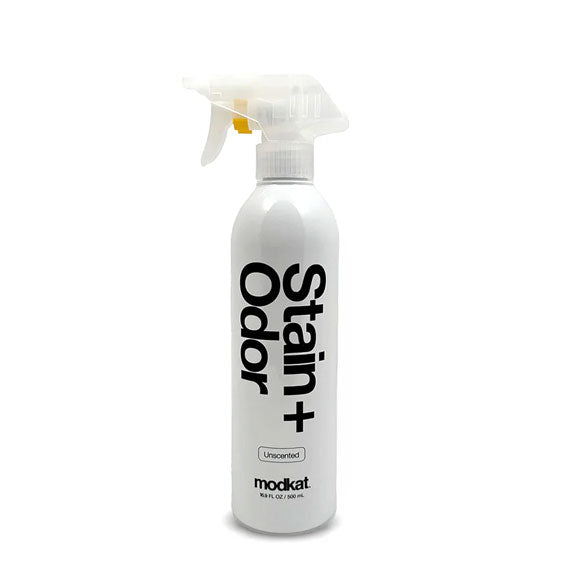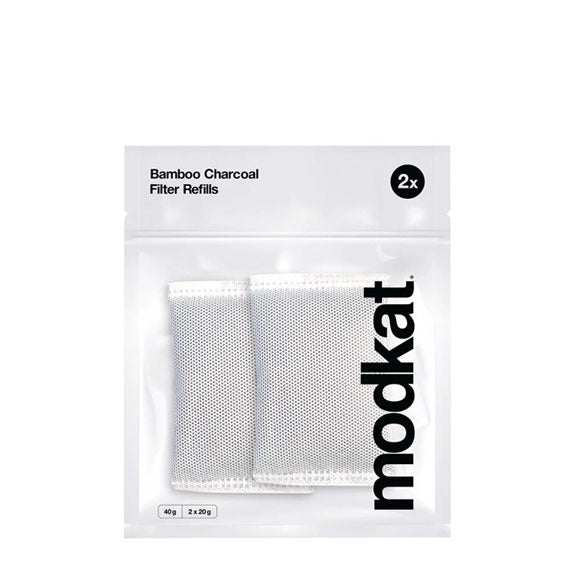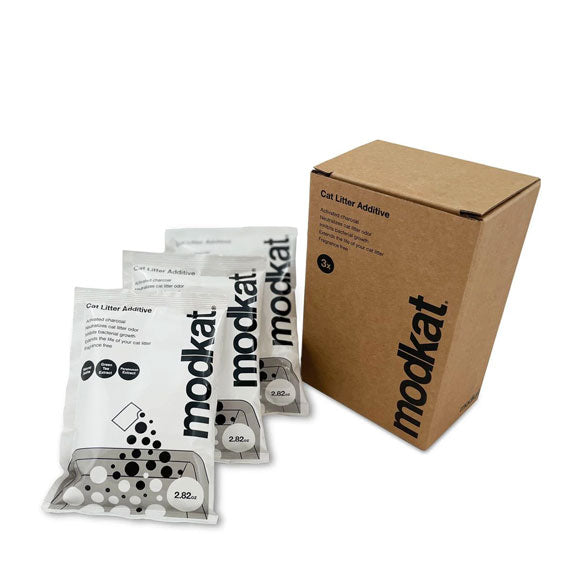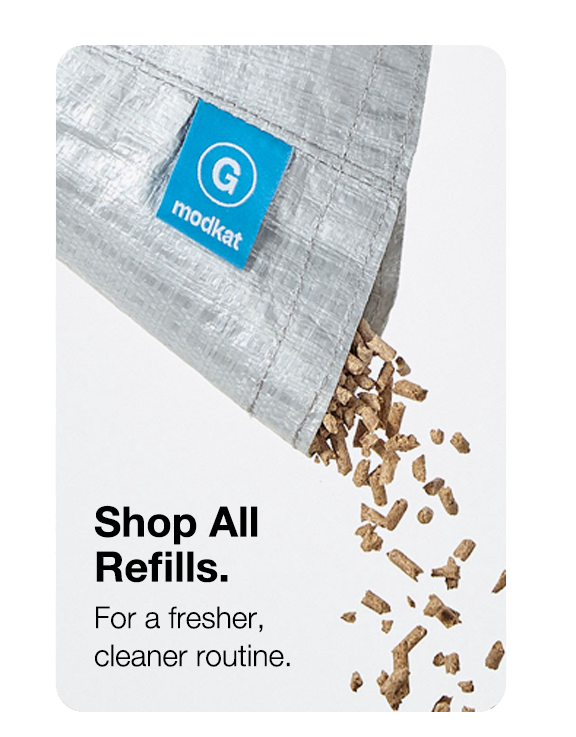Litter Boxes
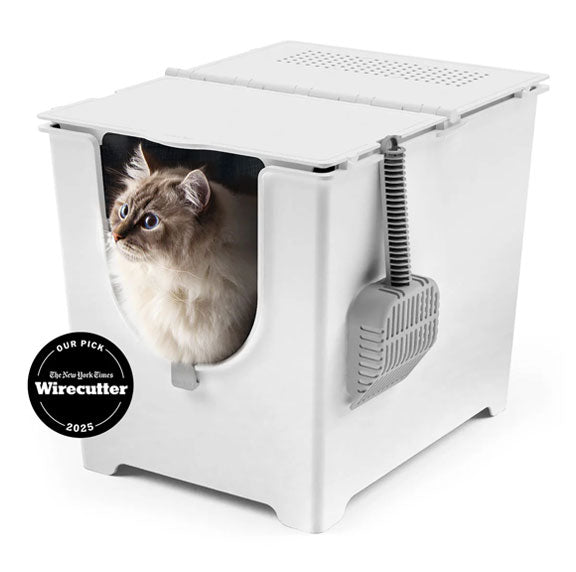
Modkat Flip
Front-Entry Litter Box

Modkat XL
Front/Top-Entry Litter Box
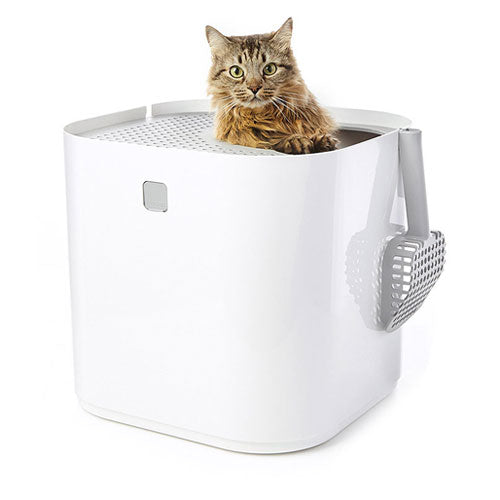
Modkat
Top-Entry Litter Box
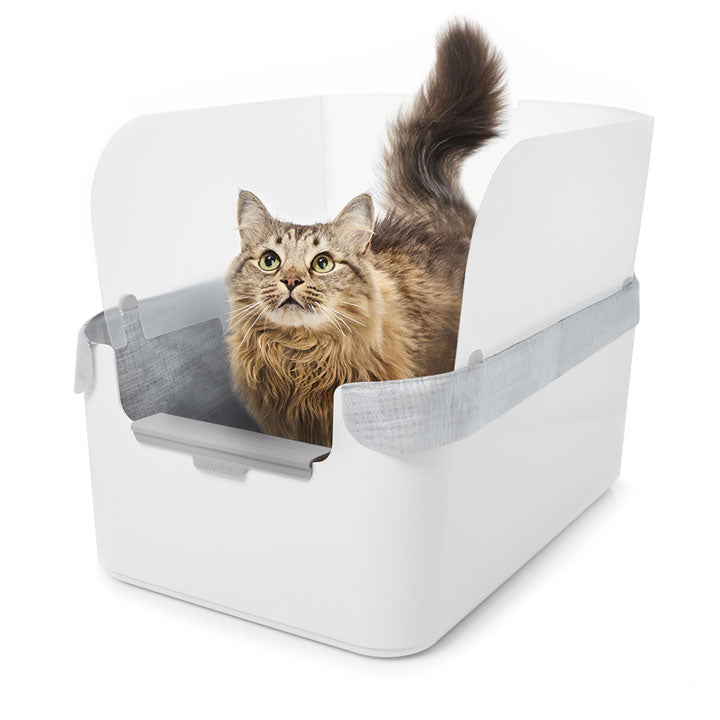
Modkat Tray
Open Litter Box
Bundles
Essentials

Litter Keeper
Two colors
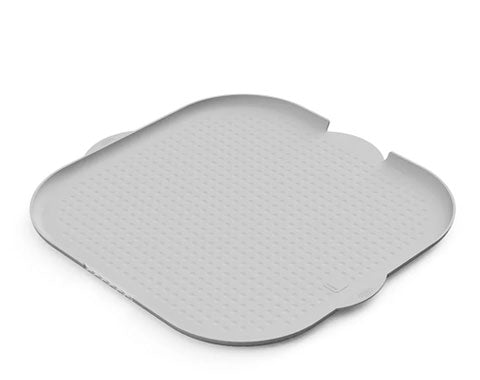
Litter Mats
Multiple styles, colors & sizes
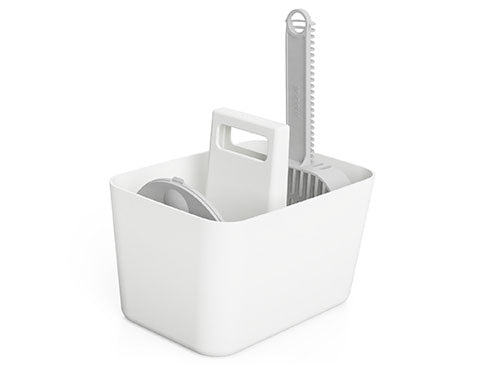
Tidy-Up Kit
Scoop holder & dustpan
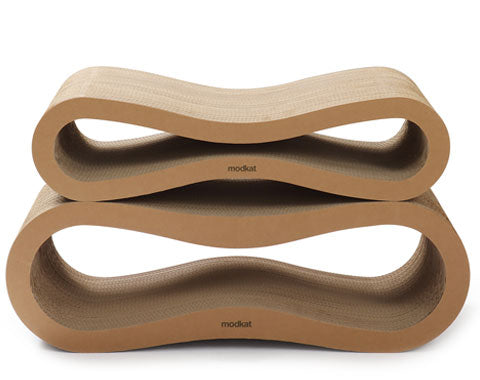
Lounge + Play
Scratchers & toys
Refills
Add description, images, menus and links to your mega menu
A column with no settings can be used as a spacer
Link to your collections, sales and even external links
Add up to five columns
Add description, images, menus and links to your mega menu
A column with no settings can be used as a spacer
Link to your collections, sales and even external links
Add up to five columns
Litter-free floors, it's a beautiful thing.
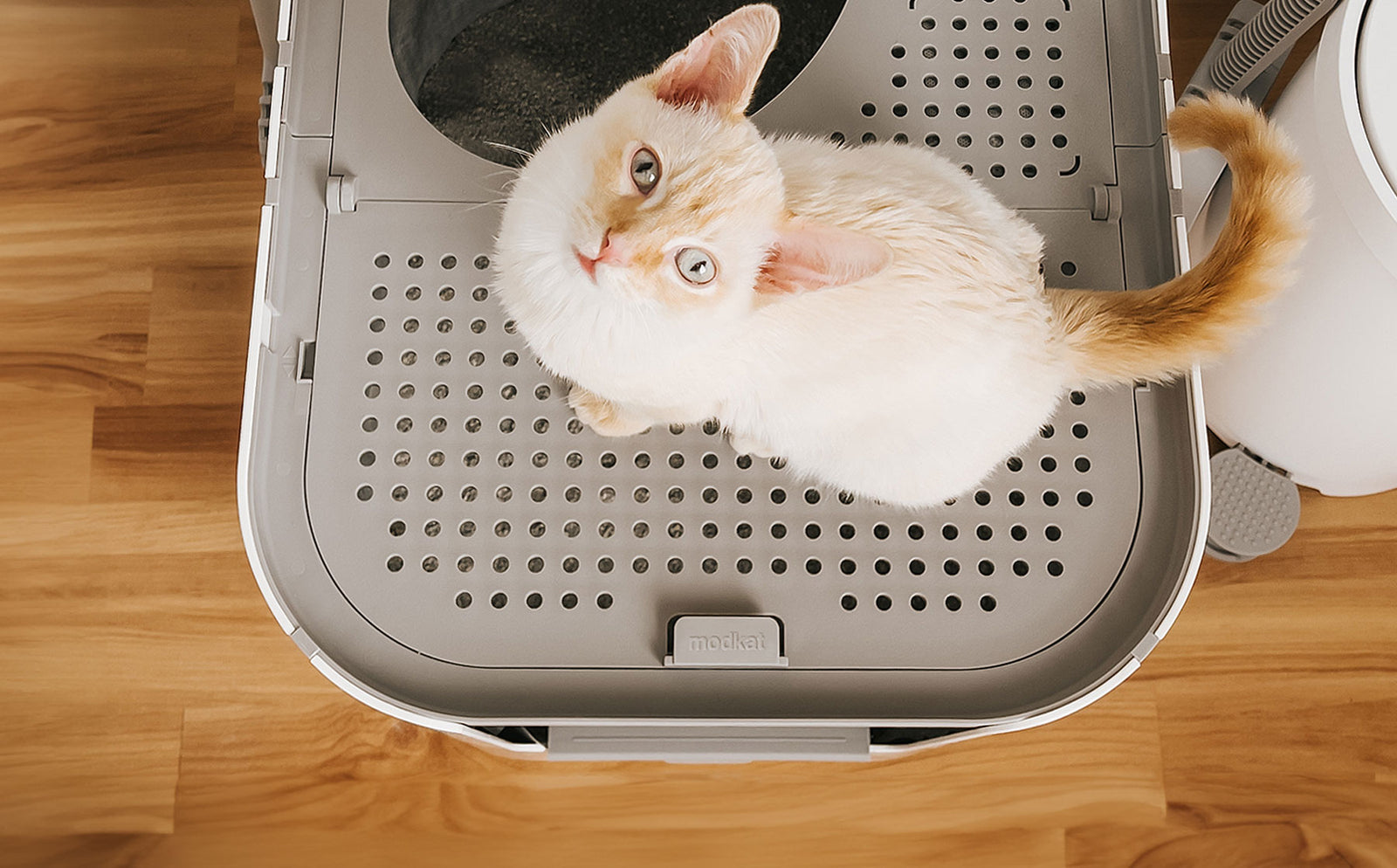
Pic: @dreamgreendiy
We love cats. Just not litter. Or rather, we're grateful for litter, but only when it stays in the box and doesn't get tracked, scattered, or kicked all over the house.
Cats are smart. When cared for and parented well, they make managing litter a piece of…cake.
Here's the Modkat scoop on a litter-free home:
Keep track of your kitty's litter box habits.
- Does she prefer a particular kind of litter box?
- Has she recently eliminated inappropriately such as behind the couch, in another room, or near—but not inside—the box?
- Are particular odors coming from the litter box?
- How frequently does she relieve herself during the day?
Litterbox: the real MVP.
Choosing a litter box your cat loves is the first thing to do when looking to minimize cat litter. Modern litter boxes allow entry from the top or the front (or even an alternating lid option). Most cats show preferences for a particular kind of box—usually the one that allows them to make a quick getaway in case of a perceived threat.
The right-size litter box should measure about 1.5 times larger than a box your cat can just fit in. When we designed our first litter box, we went with a 16-inch by 16-inch size, larger than most standard litter boxes. For plus-size cats, we went all out with a 21-inch by 16.3-inch box.
A covered box can keep litter where it belongs when cats kick and scratch as part of their bathroom ritual. But then, some cats prefer to go right out in the open—proudly. As the parent, you'll know best what size and style box your cat prefers.
The general rule of the claw is one litter box for each cat in the home, plus one more, according to the Humane Society. Cats can be choosy and territorial about where they let themselves cut loose. Your kitty probably won't accept a litter box if it's been used already or even if it smells like another cat has visited it.
The right location for your litter box.
Placing the litter box at the right spot is as crucial a decision as deciding on the kind of box you buy. Boxes often get placed where it's convenient for humans, which is usually in a high-traffic area filled with noisy people, dogs, or machines. Cats, though, prefer quieter spots that offer them privacy to do their business. A closet, spare room, or similar low-traffic area works best.
If you have multiple cats, it’s a good idea to place litter boxes in more than one location. You don't want to cluster the boxes since each one of your cat's needs some me-space while doing business.
Cats need light to see what they're doing, too, according to Ontario SPCA and Humane Society findings. Mistaken popular opinion holds that cats enjoy perfect night vision, which unfortunately leads to litter boxes being placed in dark areas. We recommend putting the box in a decently-lit area so kitty feels safe and can freely navigate around.
Because some litter will inevitably fall out, it makes sense to place the boxes on surfaces that are relatively effortless to clean, such as hardwood floors or tiles. It's smart to avoid positioning the box on a carpet because if there’s an accident, you’ll have a tough time with cleanup.
Securing the box in an easy-to-use, easy-to-clean, and out-of-the-way location can go a long way to containing litter.
Put litter in its place: litter mats and odorizers.
Despite your best efforts, however, you never know when litter might spill or get tracked outside the box by tiny paws. Wouldn’t it be awesome if you could stop litter, right in its tracks? Litter mats do an impressive job of getting all the smelly stuff under control, even if it gets on your cat’s paw.
It's a good idea to invest in a litter mat, that’s at least a few inches bigger than the box. The mat will serve as the first surface your pet touches when she leaps out of the box, and it will collect most of the excess litter easily. That saves you and your companion a lot of hassle.
Containing litter goes beyond the tangible stuff in the box, too. It also means you restrict the smell to a minimum. It's best to go for deodorizers and odor filters that keep the smells at bay but don't make the litter box fragrant. Cats are very sensitive to odors. If your pet doesn't like the pine-fresh scented plug-in you bought, she might try to find alternatives to the litter box, and that can turn into a nightmare for you. The best options are to mix baking soda with your cat's litter or invest in an unscented filter kit for your cat's litter box.
Cleaning the litter box as a ritual.
Who wants nasty smells around the house? Neither you nor your cat! Cats don’t want to sit around in their waste because… well, you know the reason.
We believe in taking the litter box duty very seriously. To ensure adequate hygiene, scoop clumped up the litter out of the box every day. The scooping cycle also depends on the number of feline companions in your house. More cats, more scooping.
Keep the litter deep enough so that the lumps don't stick to the bottom of the box. It helps to scoop as soon as your cat does her business because things stick easily to the surface. If not tended to immediately, this could mean a lengthy cleaning session later.
Deep cleaning the litter box and the supplementary tools every once in a while will also go a long way toward keeping your cat healthy and happy. Don't wait for a weekly scrubbing day to sort out all the smells and mess. Instead, try to build a routine so regular tidying won't seem like a cumbersome task.
An effective way to prevent littering is by using litter box liners. These keep bacteria and odor in check and last up to three months if your tiger doesn't scratch too ferociously. Plus, they keep litter where it belongs.
A proactive approach to cat litter can mean a clean house and a happy cat. So be sure to choose a box your cat will use, keep the litter fresh and contained, sort out the right spot for the box, and invest in a litter mat. You and your cat should be good to go! 🖤🐈
Shop the Modkat litter boxes and accessories to freshen up your cat litter area today!
“It looks nicer than any other hooded or open option we considered.”

Categories
Meow from Brooklyn.
Sign up and get early access to product drops, exclusive offers, and the occasional cat meme.
Similar products related to this blog:
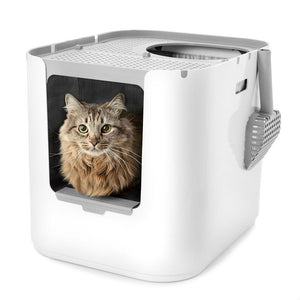
"It looks nicer than any other hooded or open option we considered."

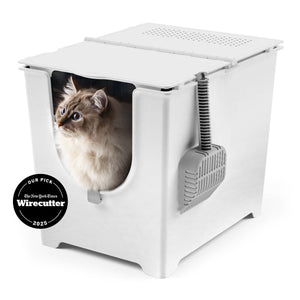
"This litter box keeps everything in, nothing gets out the sides."

"My beautiful ragdoll cat and I both love the new Modkat Litter tray!"


